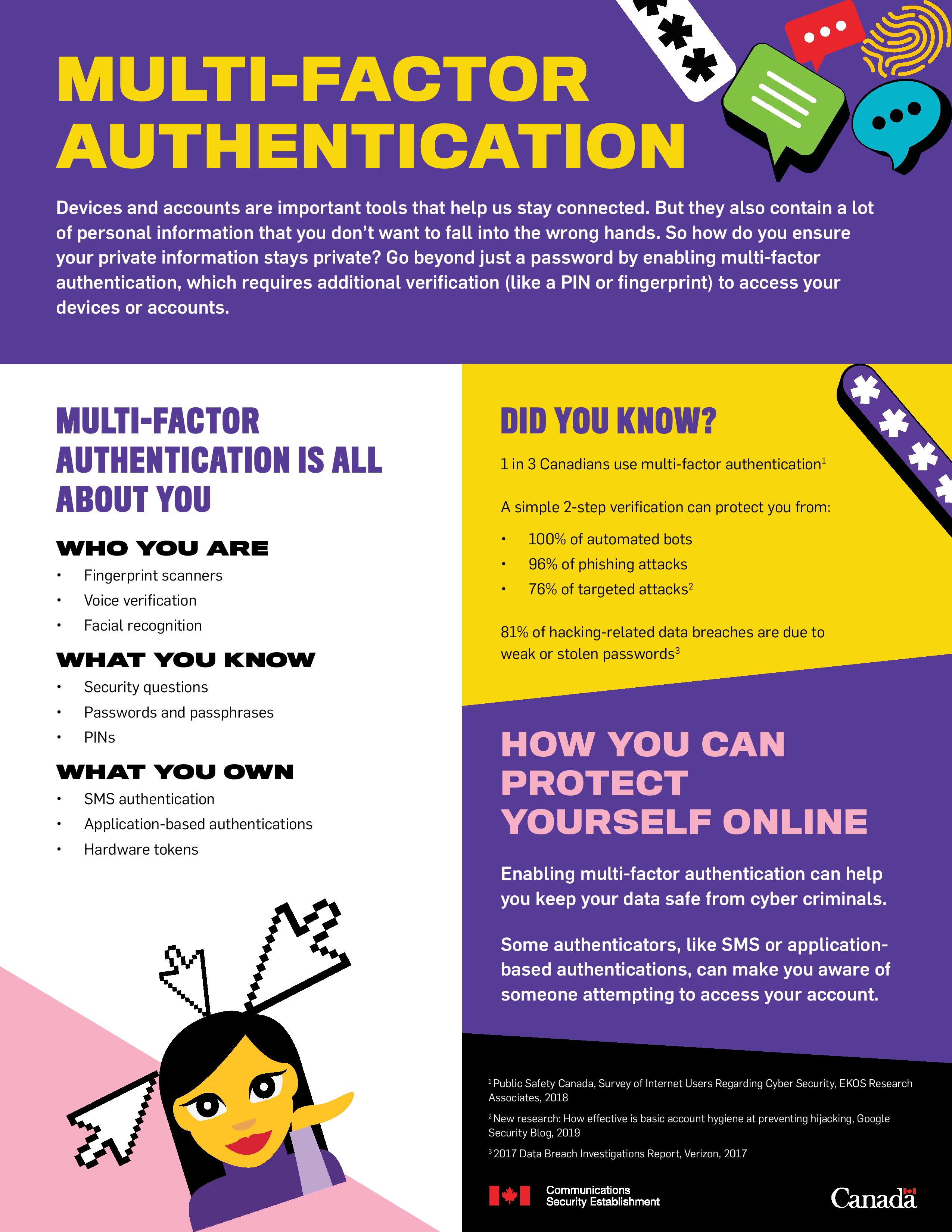
-
Transcript
Multi-factor authentication
Devices and accounts are important tools that help us stay connected. But they also contain a lot of personal information that you don’t want to fall into the wrong hands. So how do you ensure your private information stays private? Go beyond just a password by enabling multi-factor authentication, which requires additional verification (like a PIN or fingerprint) to access your devices or accounts.
Multi-factor authentication is all about YOU
Who you are
- Fingerprint scanners
- Voice verification
- Facial recognition
What you know
- Security questions
- Passwords and passphrases
- PINs
What you own
- SMS authentication
- Application-based authentications
- Hardware tokens
Did you know?
- 1 in 3 Canadians use multi-factor authentication1
- A simple 2-step verification can protect you from:
- 100% of automated bots
- 96% of phishing attacks
- 76% of targeted attacks2
- 81% of hacking-related data breaches are due to weak or stolen passwords3
How multi-factor authentication can help protect you
- Enabling multi-factor authentication can help you keep your data safe from cyber criminals.
- Some authenticators, like SMS or application-based authentications, can make you aware of someone attempting to access your account.
1 Public Safety Canada, Survey of Internet Users Regarding Cyber Security, EKOS Research Associates, 2018
2 New research: How effective is basic account hygiene at preventing hijacking, Google Security Blog, 2019
3 2017 Data Breach Investigations Report, Verizon, 2017